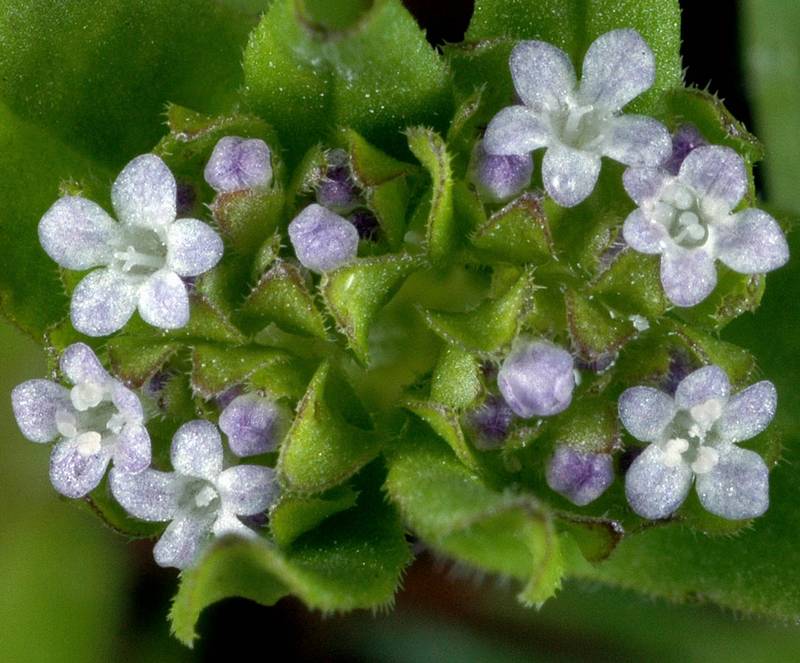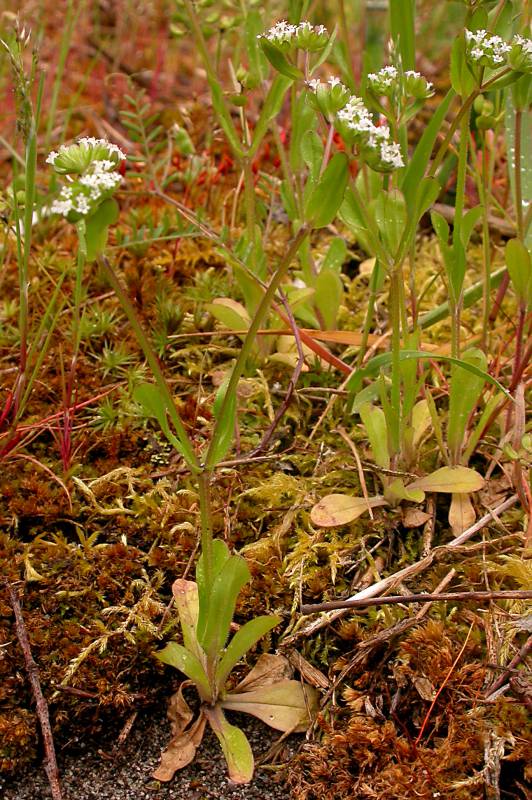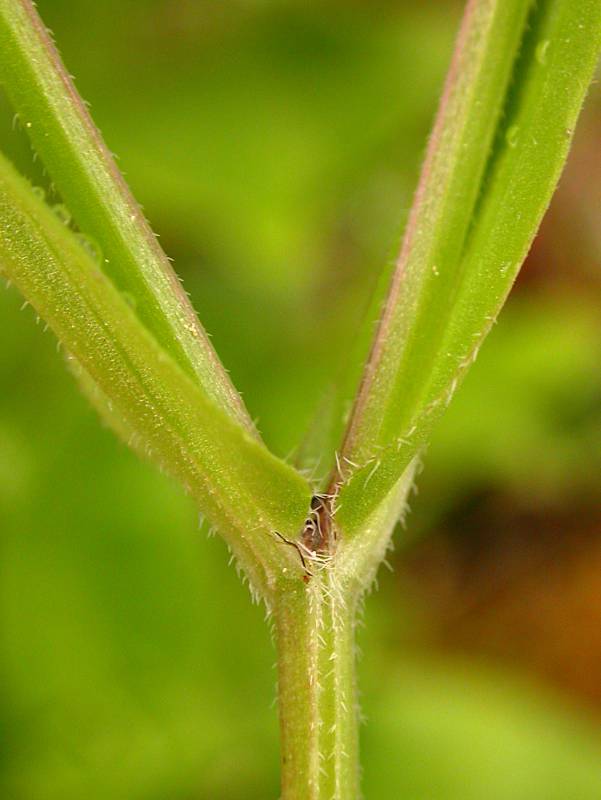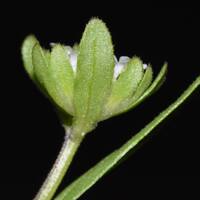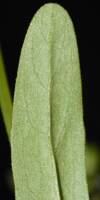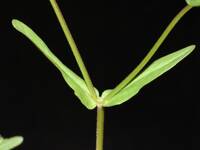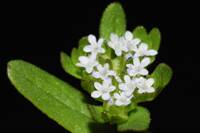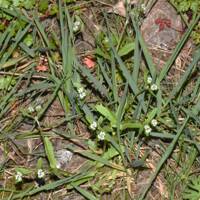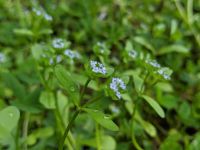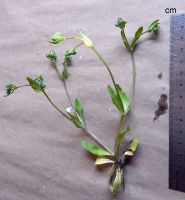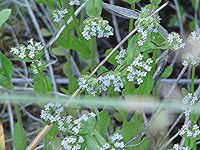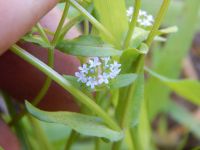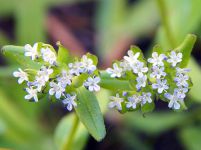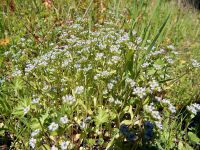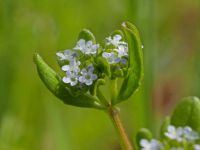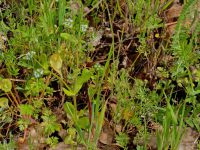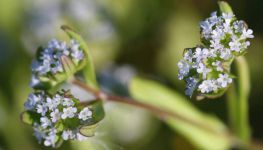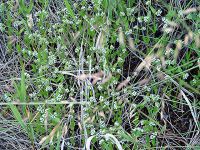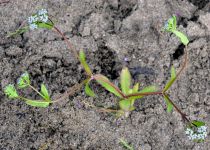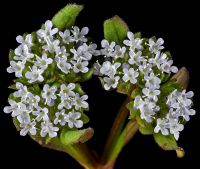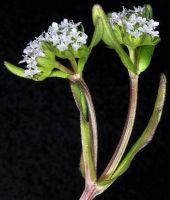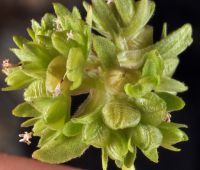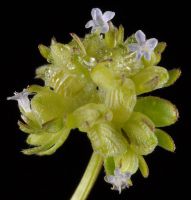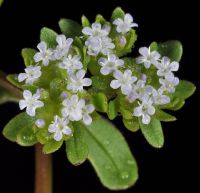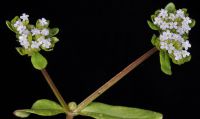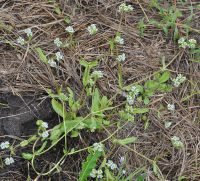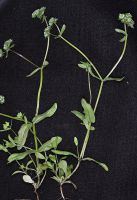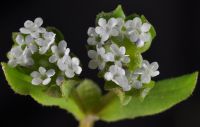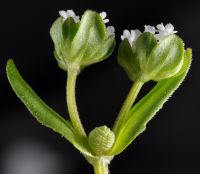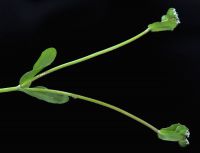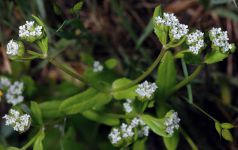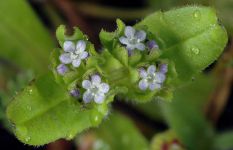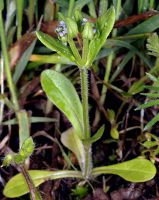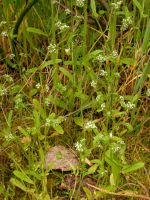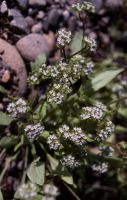Distribution: Occurring on both sides of the Cascades crest in Washington; British Columbia south to California, east to the Rocky Mountains; eastern half of North America east of the Great Plains.
Habitat: Moist, open places, often in disturbed soil.
Flowers: April-May
Origin: Introduced from Europe
Growth Duration: Annual
Conservation Status: Not of concern
Pollination: Self-pollination, generalist
Annual herb, the weak stem 1-4 dm. tall, simple or dichotomously few-branched.
Leaves opposite; lower leaves broadly oblanceolate, petiolate; other leaves oblong, sessile, mostly entire, 1-7 cm. long and 3-18 mm. wide.
Flowers in several small, compact clusters 3-15 mm. wide at the ends of the branches; calyx obsolete; corolla united, the 5 lobes about equal and equaling the funnel-shaped tube, 1.5-2 mm. long, white or pale bluish, the tube with a small bulge on the side; stamens 3; stigma 3-lobed; ovary inferior, 3-celled, with two cells sterile.
Fruit dry, about 2 mm. long, the fertile cell with a corky mass on the back.
Publication: Sp. Pl. 1: 33-34. 1753.
PNW Herbaria: Specimen records of Valerianella locusta in the Consortium of Pacific Northwest Herbaria database
WA Flora Checklist: Valerianella locusta checklist entry
OregonFlora: Valerianella locusta information
E-Flora BC: Valerianella locusta atlas page
CalPhotos: Valerianella locusta photos

